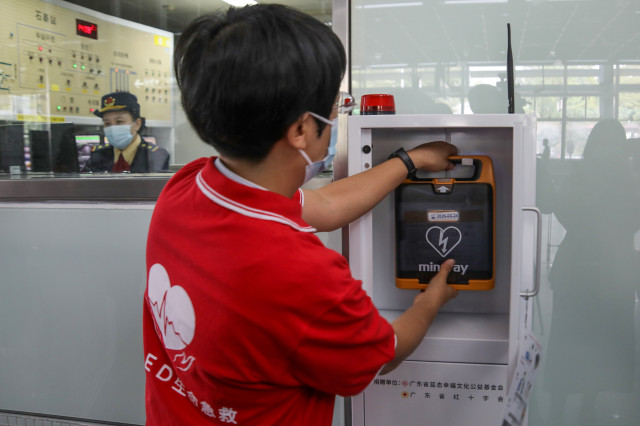Recently, the Guangzhou Municipal Health Commission issued interim regulations on the deployment of Automated External Defibrillators (AEDs) in public places, aiming to enhance emergency response capabilities across the city.
According to the official announcement on the Guangzhou Municipal Health Commission's website, the regulations emphasize ensuring AED availability within 3 to 5 minutes and adequate training for personnel. This initiative is designed to maximize the usage of AEDs in public locations such as government service halls, airports, train stations, urban transit hubs, highway service areas, tourist spots, schools, sports facilities, elderly care institutions, large shopping malls, and so on.

(Photo: Nanfang Plus)
Key highlights of the regulations include:
Deployment Guidelines: AEDs must be strategically located based on factors such as population density, traffic flow, distance distribution, key areas, and venue size, ensuring quick accessibility within 3 to 5 minutes.
Training Requirements: For every AED deployed, at least ten personnel working nearby must undergo standardized training. This training is essential for effectively handling sudden cardiac arrest incidents, with participants receiving certificates upon completion.
Specific Requirements for Different Locations: Detailed specifications outline the minimum number of AEDs required in various settings. For instance, each government service hall should be equipped with at least one AED, while airports and train stations are mandated to provide one AED per floor serving passengers. Additionally, one more AED will be added for every 40,000 square meters of passenger service area on the floor. Similarly, sports venues and elderly care facilities must also adhere to specific deployment guidelines relative to their size and capacity.
The regulations also stipulate routine maintenance, inspection, and record-keeping to ensure the operational readiness of AEDs. Emergency response plans tailored to sudden cardiac arrest incidents are also mandated, with annual emergency drills required to maintain preparedness.
Author | Hannah
Editor | Nan, Will, James
















